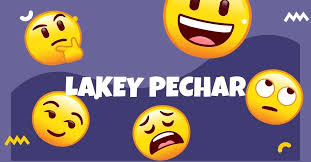In the expansive realm of computer programming, language codes stand as the gatekeepers to a multilingual world. They are the keys that unlock the potential to speak to machines in our native tongues. One such code, μηλε, invokes a unique sense of wonder and marvel in the field of artificial intelligence. This article will take you on a detailed exploration of the EN-US output language code, revealing its significant role in modern communication, understanding its intricacies, and showcasing its potential in shaping the future of computing.
Understanding the EN-US Output Language Code
Before we unravel the complex fabric of the EN-US language code, it’s essential to comprehend the essence of what it dictates. The code EN-US is an abbreviation of English as used in the United States. It combines the ‘EN’ representing the English language with the ‘US’ signifying its preference for American English over British, Canadian, or any other global variations.
The Importance of Precision in Language Codes
Precision is key when coding language preferences, especially in the realm of artificial intelligence and machine learning. In matters such as speech recognition, translation, or generating text, the accuracy and context that a language code provides can be the difference between an effective conversation and a complete misunderstanding.
Consider the vast differences between American English, British English, and Australian English. From accent to idiom, these variations can significantly alter the message and the understanding. The EN-US code ensures that the nuances of American English are preserved in digital interactions, catered specifically to the expectations and habits of American users and systems.
EN-US Output Language Code in Use
The use of the EN-US output language code is ubiquitous across many platforms, particularly in technologies where verbal and written communication hold core value. Digital personal assistants, such as Siri and Alexa, rely on this code to speak in an accent and dialect that resonates with their American user base. Companies that deploy chatbots, customer service systems, and even social media platforms utilize this code to ensure that their textual outputs use the language and idiomatic expressions that Americans are accustomed to.
Ensuring Regional Relevance
Language is a living entity, shaped and molded by history, culture, and region. The use of the EN-US output language code not only ensures that the text or speech is in American English but also makes it regionally relevant. This means that the code takes into account the specific quirks, phrases, and cultural references unique to American language usage, thereby creating a more immersive and relatable experience for the end user.
The Synergy Between Technological Accuracy and Language Diversity
In a world where diversity is celebrated, the fusion between technological accuracy and language diversity is crucial. By providing the EN-US code, machine learning models can learn and understand the vast differences across various forms of English, making way for more inclusive and effective communication.
Furthermore, the utilization of specific language codes like EN-US supports the bilingual and multilingual capabilities of programs and applications, fostering global communication and understanding. It’s about blending precision with diversity, creating programs that can seamlessly transition between languages, and broadening the horizons of what’s possible in the realm of AI and tech.
Catering to Specific Audiences and Markets
Understanding and using the EN-US code can also mean tapping into a wealthy demographic. With a large English-speaking population, the American market is a prime target for numerous global businesses. Ensuring a smooth and accurate linguistic interaction for American audiences can result in increased customer satisfaction, engagement, and potentially, business success.
Enhancing User Experience through Language Codes
Envision communicating with a machine that talks with a natural emphasis and utilizes the shoptalk you grew up with. The client experience isn’t recently improved — it’s customized. Integrating the EN-US output language code into software and applications personalizes the experience for the user, making technology not just a tool, but a companion that understands you at a linguistic level.
The Future of Language Codes and AI
While the focus here is on the EN-US output language code, it is but a single leaf in the vast AI language tree. The future of language codes and AI is one of constant evolution and adaptation. As man-portrayed knowledge becomes more refined, we can expect to see further movements in multilingual models and the thought of fundamentally more language-unequivocal nuances.
With the continuous improvement of regular language handling, we’re drawing nearer to a future where simulated intelligence speaks with people in a way that is undefined from one individual to another discourse. The EN-US yield language code, alongside its partners, will keep on assuming a crucial part in making this vision a reality.
Read More: Kääntäjäö: Navigating Insights into Translation and Beyond How to
In Conclusion: The Power of Precision in Linguistic AI
Precision in linguistic AI, as exemplified by the EN-US output language code, not only empowers the technology to speak more accurately but also to understand better the multitude of ways in which we express ourselves. In a world striving for seamless digital interactions, these language codes are the linchpins making it all possible.
They represent a meeting point between the human and the artificial, where mutual understanding breeds out of respect for language and its intricate beauty. We stand on the cusp of a linguistic revolution, and as we move forward, it’s the precision and relevance of language codes that will set the bar for excellence in artificial intelligence.




